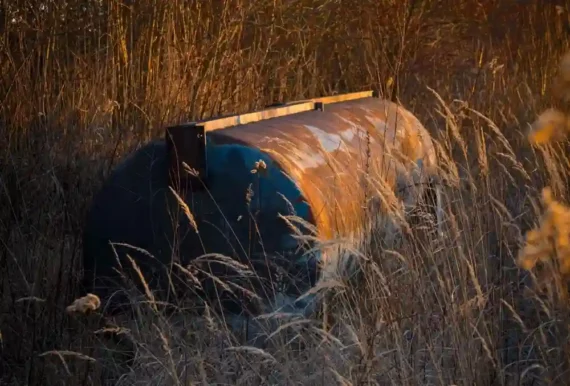A properly functioning septic system is crucial for managing household wastewater efficiently. One of the key maintenance tasks to ensure the health and longevity of your septic system is regular pumping. However, knowing when it’s time to schedule a septic tank pumping can be challenging. In this article, we’ll explore the warning signs that indicate your septic tank may need pumping, helping you avoid potential problems and costly repairs.
Section 1: Understanding the Septic System
Before we delve into the warning signs, let’s have a basic understanding of how a septic system operates.
1.1 Components of a Septic System
A typical septic system consists of two primary components:
- Septic Tank: This underground tank receives wastewater from your home. Inside the tank, solids settle at the bottom, while bacteria break down organic matter. The liquid wastewater exits the tank and flows into the drain field.
- Drain Field (Leach Field): The drain field is where the liquid wastewater is further treated and dispersed into the soil, naturally filtering it before it returns to the environment.
Section 2: Warning Signs Your Septic Tank Needs Pumping
Regular septic tank pumping is essential to prevent system overload and damage. Here are the warning signs that indicate it’s time to schedule a septic tank pumping:
2.1 Slow Drains
One of the early warning signs of a full septic tank is slow drains throughout your home. If you notice that sinks, showers, bathtubs, or toilets are draining more slowly than usual, it may indicate that your septic tank is reaching capacity.
2.2 Gurgling Toilets
When flushing the toilet, if you hear gurgling sounds from the drain or if the water level in the bowl rises and falls irregularly, it can be a sign of a septic tank that needs pumping. This happens because the septic tank is no longer effectively processing wastewater.
2.3 Foul Odors
Unpleasant odors in and around your home are a clear indicator of septic system issues. If you detect foul sewage odors inside your house or near the septic tank or drain field, it’s a sign that gases and wastewater are not being properly contained or treated.
2.4 Sewage Backups
Perhaps the most obvious sign of a full septic tank is sewage backups in your home. If wastewater backs up into sinks, bathtubs, or toilets, it’s a severe problem that requires immediate attention. Continued use of plumbing fixtures can exacerbate the issue and lead to extensive damage.
2.5 Lush Grass Over the Drain Field
While it may seem counterintuitive, an unusually lush and green patch of grass over your drain field can be a sign of septic system issues. It suggests that liquid wastewater is not being properly absorbed into the soil, indicating a potential problem with your septic tank.
2.6 Standing Water or Puddles
If you notice standing water or puddles forming in your yard, particularly near the septic tank or drain field, it can indicate a septic system problem. It suggests that the drain field is not effectively dispersing liquid wastewater, potentially due to a full septic tank.
2.7 High Nitrate Levels in Well Water
If you rely on well water and conduct water quality tests, high nitrate levels can be an indirect sign of septic system issues. Nitrate contamination can occur when a septic system is overloaded, and untreated wastewater reaches the groundwater.
Section 3: Regular Maintenance and Prevention
To avoid experiencing these warning signs and potential septic system problems, it’s crucial to invest in regular maintenance and follow preventive measures:
3.1 Regular Septic Tank Pumping
Consult with a professional septic service provider to establish a regular septic tank pumping schedule based on the size of your tank, the number of occupants in your home, and your water usage. Regular pumping is the most effective way to prevent system overload and related issues.
3.2 Water Conservation
Be mindful of water usage in your home. Conserving water not only helps the environment but also reduces the load on your septic system. Fix leaky faucets and toilets promptly, and avoid excessive laundry and long showers.
3.3 Proper Waste Disposal
Dispose of appropriate materials down your drains and toilets. Avoid flushing non-biodegradable items like sanitary products, diapers, wipes, and grease, as they can clog your plumbing and septic system.
3.4 Limit Chemical Drain Cleaners
Excessive use of chemical drain cleaners can harm the beneficial bacteria in your septic tank. Consider using enzyme-based or septic-safe drain cleaners if needed.
3.5 Professional Inspections
In addition to regular septic tank pumping, schedule professional septic system inspections. Professionals can assess the condition of your system, identify potential issues, and recommend necessary maintenance or repairs.
Conclusion
Understanding the warning signs that indicate your septic tank needs pumping is crucial for responsible homeownership. Regular septic tank pumping and maintenance are essential to prevent system overload, sewage backups, and costly repairs.
By recognizing the warning signs early and investing in regular maintenance and preventive measures, you can ensure the longevity and efficient operation of your septic system. Remember that septic system maintenance is an investment in the well-being of your home and the protection of the environment, making it a critical aspect of responsible homeownership.




